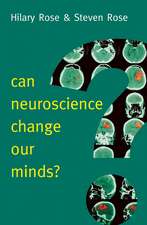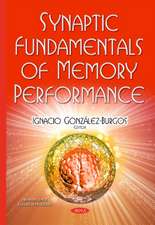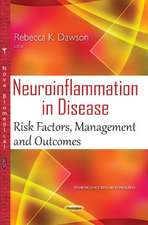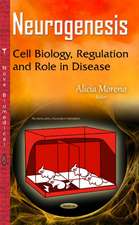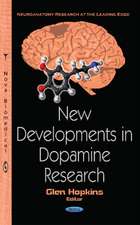Selenium in Biology and Medicine: Proceedings of the 4th International Symposium on Selenium in Biology and Medicine. Held July 18-21, 1988, Tübingen, FRG
Editat de Albrecht Wendelen Limba Engleză Paperback – 9 dec 2011
Preț: 645.60 lei
Preț vechi: 759.54 lei
-15% Nou
Puncte Express: 968
Preț estimativ în valută:
123.55€ • 128.51$ • 101.100£
123.55€ • 128.51$ • 101.100£
Carte tipărită la comandă
Livrare economică 14-28 aprilie
Preluare comenzi: 021 569.72.76
Specificații
ISBN-13: 9783642744235
ISBN-10: 3642744230
Pagini: 352
Ilustrații: XVII, 330 p.
Dimensiuni: 170 x 244 x 18 mm
Greutate: 0.56 kg
Ediția:Softcover reprint of the original 1st ed. 1989
Editura: Springer Berlin, Heidelberg
Colecția Springer
Locul publicării:Berlin, Heidelberg, Germany
ISBN-10: 3642744230
Pagini: 352
Ilustrații: XVII, 330 p.
Dimensiuni: 170 x 244 x 18 mm
Greutate: 0.56 kg
Ediția:Softcover reprint of the original 1st ed. 1989
Editura: Springer Berlin, Heidelberg
Colecția Springer
Locul publicării:Berlin, Heidelberg, Germany
Public țintă
ResearchDescriere
In July, 1988, more than 300 scientists from 29 different countries gathered at Tiibingen, W. Germany, in order to spend 4 days discussing their favourite trace element, selenium. This meeting continued the good tradition of three previous meetings held in Corvallis/Oregon, 1976, in Lubbock/Texas, 1980, and in Beijing/China, in 1984. Incidentally, the University of Tiibingen provided a unique historical background for a Symposium devoted to recent advances in biochemistry, pharmacology, human nutrition and human health; here, the first independent depart ment of Physiological Chemistry in Germany was founded in 1845. Pro fessor H9Ppe-Seyler elucidated here the hemin structure and his student Friedrich Miescher discovered the nucleic acids. This book contains one-half of the oral or poster presentations which were selected before the meeting was held on the basis of a one page abstract. It is the reader who will have to decide whether this time consuming policy of quality assessment was warranted or not.
Cuprins
I Biochemistry of Selenoproteins and Selenium Compounds.- The Regulation of Glutathione Peroxidase Gene Expression; Implication for Species Difference and the Effect of Dietary Selenium Manipulation.- Regulation of Expression of Glutathione Peroxidase by Selenium.- Studies on New Selenoproteins and Specific Selenium Target Tissues.- Selenium-Containing Proteins in Plasma of Higher Primates.- Involvement of a Selenoprotein in Glycine, Sarcosine, and Betaine Reduction by Eubacterium acidaminophilum.- Dependence of Mouse Liver Phospholipid Hydroperoxide Glutathione Peroxidase on Dietary Selenium.- Interaction of Heparin with a Selenoprotein in Human Plasma.- Selenium-Independent Glutathione Peroxidase in Malaria Parasites.- Synthesis of a Selenium Analogue of Neurospora crassa Metallothionein and Its Properties.- Reactions of the Thioredoxin System with Selenium.- Selenite-Induced Variation of Glutathione Peroxidase Activity in Mammalian Cells and Its Consequences for Cellular Radiation Resistance.- Effects of Selenium Supplementation on Platelet Function as Assessed by Platelet Aggregation and Glutathione Peroxidase Activity.- Role of Glutathione Peroxidase and ?-Tocopherol in Protecting Rat Erythrocytes Against tert-Butyl Hydroperoxide-Induced Hemolysis in Vitro.- Active Oxygen Generation by the Reaction of Selenite with Reduced Glutathione in Vitro.- Studies on Selenite-Induced DNA Fragmentation and the Role of Poly (ADP-Ribose) Polymerase in Selenite Toxicity.- Involvement of Cellular Sulfhydryl Compounds in the Inhibition of DNA and RNA Synthesis by Selenite.- II Influence of Selenium on the Metabolism of Animals and Man.- Selenium-Dependent Metabolic Modulations in Mouse Liver.- Selenium Deficiency and Thyroid Hormone Metabolism.- Glutathione Metabolism as Affected by Selenium Deficiency.- Selenium Deficiency and the Metabolism of Ketone Bodies.- Transport of Selenomethionine and Methionine Across the Intestinal Brush Border Membrane.- Plasma Malondialdehyde and Exhaled Hydrocarbons: Are They Reliable Indicators of Lipid Peroxidation and Glutathione Peroxidase Activity?.- Biochemical Studies on Selenium and Keshan Disease — The Oxidant Stress and Defence Capacity in Blood of Selenium-Deficient Children.- Effect of Growth Phase on Deposition of Selenium (Se) in Tissues of Rats Fed Elevated Dietary Levels of Se as Either L-Selenomethionine or Sodium Selenate.- Selenium Intake Induces Growth Retardation Through Reversible Growth Hormone and Irreversible Somatomedin C Suppression.- Selenium in the Central Nervous System of the Rat After Exposure to 75-Se-L-Selenomethionine.- Effect of Selenium on Adriamycin-Induced Cardiotoxicity in Mice.- Effects of Selenium Deficiency on Mouse Articular Cartilage.- Myocardial and Pancreatic Damage in Selenium Vitamin E Deficient Mice.- III Biochemical Pharmacology of Selenium Compounds.- Metabolism and Disposition of Ebselen.- The Use of Highly Enriched 77Se in Metabolic Studies of Ebselen in Man — An NMR Investigation.- Effect of Ebselen (PZ-51) in Liver Failure Induced by Propionibacterium acnes (P. Acnes).- Ebselen (PZ-51) Inhibits the Formation of Ischemic Brain Edema.- Effects of Ebselen (PZ-51) on Experimental Cerebral Vasospasm.- Ebselen, a Seleno-Organic Compound, Inhibits Leukocyte Aggregation and Reduces the Plasma Leukotriene B4 Level in Humans and Rats.- Binding of Ebselen to Plasma Protein.- Protection of Experimental Cobalt Cardiomyopathy in the Rat by Selenium Pretreatment.- Correlation of Levels of Platinum and Selenium in Rats Treated with Cisplatin and Sodium Selenite.- IV Selenium and Human Health.- Progress in Establishing Human Nutritional Requirements and Dietary Recommendations for Selenium.- Supplementation of a Population with Selenium — Reasons for Action and Initial Experience.- Selenium Status and Cardiovascular Disease: Dutch Epidemiologic Data.- Bioavailability of Selenium in a Selected Dutch Population.- Studies of Human Maximal and Minimal Safe Intake and Requirement of Selenium.- Are Germans Selenium-Deficient?.- Blood Selenium Levels of Norwegians Compared to Their Se Intakes.- The Intake of Selenium and Other Nutrients in a Group of Norwegian Rheumatics.- Se Supplementation of Fertilizers Has Increased the Se Intake and Serum-Se Concentration of Finnish People.- Selenium Status of Children and Adults in Northern Germany.- Urinary Excretion of Selenium (Se) and Trimethylselenonium (TMSe) by NZ Women During Long Term Supplementation with Selenate or Selenomethionine (Semet).- Selenium (Se) and Glutathione Peroxidase (GSH-Px) in Blood Components of NZ Women During Long Term Supplementation with Selenate or Selenomethionine (Semet).- Comparison of Human Response to Low Doses of Inorganic and Organic Selenium.- The Relativity Between Some Epidemiological Characteristics of Kaschin-Beck Disease and Selenium Deficiency.- The Selenium and Phospholipid (Phosphatidylcholine) Deficiency and Low Temperature of Environment May be the Pathogenetic Basis of Kaschin-Beck Disease.- Low Selenium State and Increased Erucic Acid in Children from Keshan Endemic Areas — A Pilot Study.- Selenium in Children with Acute Leukaemia During Chemotherapy.- Selenium Status and Age Effects.- V Selenium and Malignant Growth.- The Influence of Dietary Selenium on Colon, Pancreas, and Skin Tumorigenesis.- Is Selenium Metabolism Necessary for Its Anticarcinogenic Activity?.- Low Serum Selenium Level and Elevated Risk of Lung Cancer.- Study on the Relation of Se, Mn, Fe and Mo to Liver Cancer Mortality.- Determination of Selenium Contents in Sera, Hair and Glutathione Peroxidase Activities in Whole Blood of Nasopharyngeal Carcinoma (NPC) Patients.

